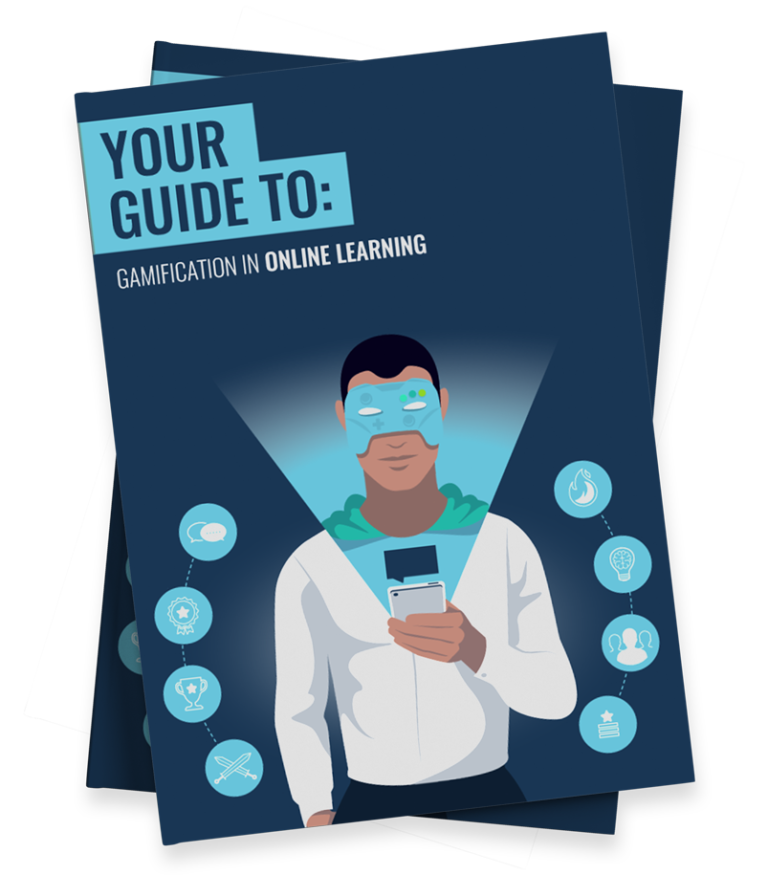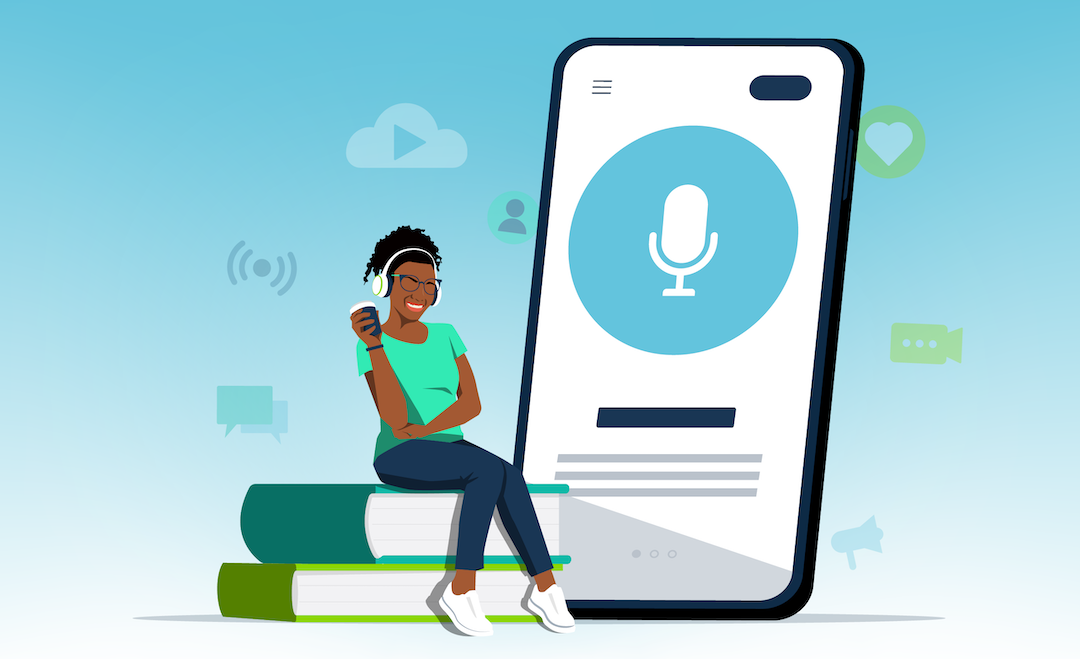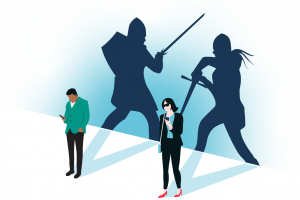 What is gamification in training and what is its relevance for the workplace of today?
What is gamification in training and what is its relevance for the workplace of today?
Did you know that engagement in training continues to be the number one challenge for L&D professionals? In fact, companies worldwide lose a staggering $13.5m per year per 1,000 employees due to ineffective training.
On a similar note, over 68% of HR leaders see the need to build critical skills and competencies. This would enable their organisations to thrive amidst today’s business challenges. Without doubt, effective training and onboarding programmes are now needed more than ever.
In this article, we will explore gamified training in all its glory. Specifically, we will look at what it is, how it works and how it drives high-impact engagement.
Finally, we will look at some great examples of companies who have successfully deployed gamification within their training approach. Let the game-based goodness begin!
- What is Gamification in Training
- Gamification Training vs. Traditional Training Programs
- How Is Gamification Effective in Training?
- Key Features of Gamification
- Benefits of Gamification to Corporate Training
- Limitations of Gamification
- Gamification Do’s & Don’ts in Training
- Gamification Examples
- The Final Word
What is Gamification in Training?
By definition, gamification is the process of applying game mechanics to a non-gaming environment to increase engagement, happiness and loyalty. As such, gamified training is training that incorporates gaming elements or mechanics within its approach.
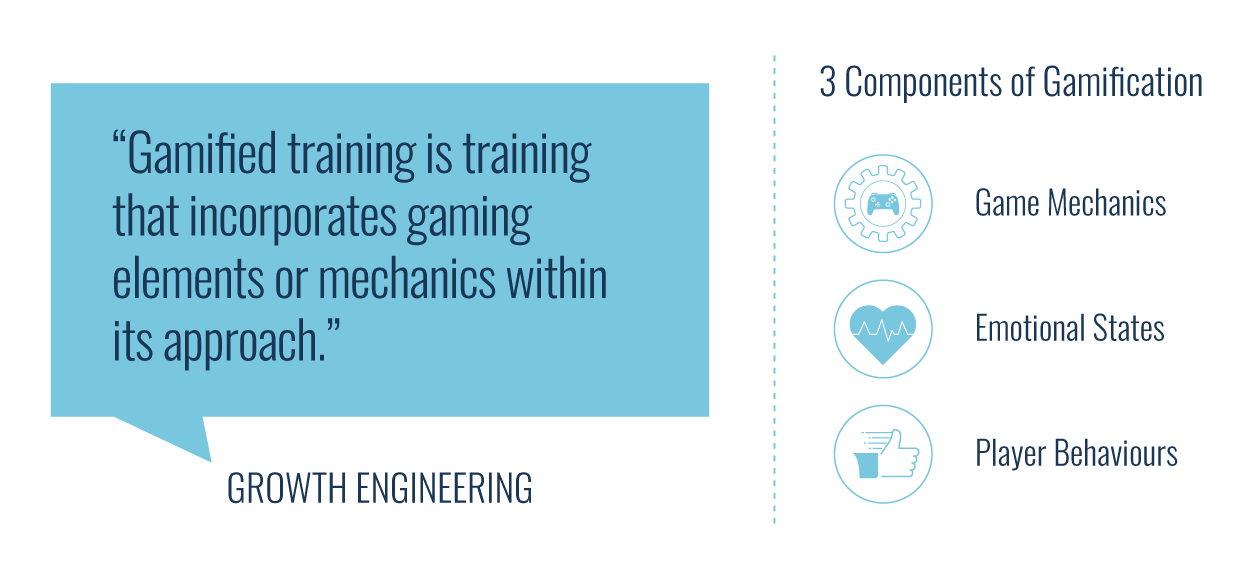
- Game mechanics are determined by gamification designers. These are the elements that have been plucked from games and incorporated into your training environment. In other words, mechanics specify the learning goals and how players win or progress through levels, or earn points. For example, mechanics include (but are not limited to) points, badges, levels and leaderboards.
- Player behaviours are consequent actions that emerge when these game mechanics are executed. They include desired behaviours such as course completions, taking tests, and knowledge sharing.
- Emotional states is the third piece of the gamification puzzle. These consist of positive or negative emotions evoked during the training experience (such as excitement or disappointment).
Gamified Training vs. Traditional Training Programs
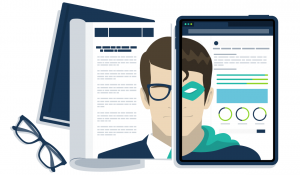
Gamified training has a long and colourful history. It has become a popular choice among L&D professionals. This is because it helps to address the ineffectiveness of existing or traditional training programmes.
In many cases, your training materials will consist of simple text and image-based documents or eLearning units. Then there’s your face-to-face training. This will likely involve employees cooped up in a room listening to a live lecture or video presentation.
Moreover, traditional training often does not cater to the distinct learning needs of different generations. For instance, old-fashioned learning formats will no longer cut it for today’s modern learner.
Conversely, several studies have shown the positive impact of gamified training over traditional learning methods.
For instance, one survey finds that 95% of employees enjoy having game-inspired elements incorporated in their work environment. Another study has found that gamification improves learning retention by up to 90%. Indeed, the results speak for themselves.
How Is Gamification Effective in Training?
In the previous section, we got you excited with some stats supporting the effectiveness of gamification in training. But how and why does gamified training work? Here are five factors…
1. Gamification is Backed By Brain Science
 Gamification releases neurotransmitters that help us feel good. It also gives learning an addictive quality. One example is the feel-good hormone dopamine. This gets released when you reward users for specific actions.
Gamification releases neurotransmitters that help us feel good. It also gives learning an addictive quality. One example is the feel-good hormone dopamine. This gets released when you reward users for specific actions.
Serotonin, on the other hand, is linked to improving mood levels. For instance, game-based elements such as badges help unleash this happy hormone. When your learners build their badge cabinet, a rush of serotonin is produced in the brain stem, as they proudly recall their previous achievements.
Also, let’s not forget endorphins. This thrill-inducing chemical will certainly keep your learners hooked!
By gamifying your training, you unleash a powerful chemical cocktail that will help drive both engagement and behaviour change.
2. Gamification Draws From Intrinsic & Extrinsic Motivations
Gamification in training provides a conducive learning environment by tapping into the intrinsic and extrinsic motivations of learners. Through the use of game mechanics within a training environment, we can better capture our learners’ attention and focus.
For example, earning rewards and climbing up the leaderboard keep learners engaged with their learning outcomes. More importantly, it taps into the deeper motivations of learners such as their desire for meaning and achievement. As such, gamification helps learners achieve sustained engagement!
3. Gamification Mobilises Proactive Behaviours
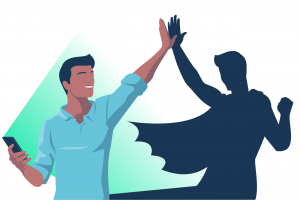 Humans are instinctively inclined to repeat behaviours or actions that provide us with satisfaction. Drawing from this, earning badges, experience points or climbing up a leaderboard helps to create deeper levels of gratification.
Humans are instinctively inclined to repeat behaviours or actions that provide us with satisfaction. Drawing from this, earning badges, experience points or climbing up a leaderboard helps to create deeper levels of gratification.
In this way, your learners will be motivated to repeat desired behaviours. Through these recurring behaviours, learning is better reinforced and retained in the long-run.
4. Gamification Enables Real-Time & Flexible Assessments
Game mechanics (e.g levels, scoreboards, leaderboards) provide an active screenshot of a learner’s performance at any given point in their training. Similarly, these mechanics can help shape assessments to fit the evolving needs of modern learners.
For instance, such tests can be transformed into fun-sized challenges filled with reinforcing triggers such as points, badges and rewards. These address modern learners’ short attention spans by keeping them repeatedly engaged.
Likewise, training administrators can easily glean insights about their audience’s progress from within the gamified environment. For example, functionality such as gamified assessments and customized learning pathways provide insight on how your learners are faring with their training.
Through gamification, you provide your learners with a greater degree of flexibility and personalisation — a definite must-have for today’s modern workplace!
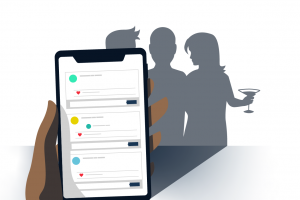
5. Gamification Empowers Social Learning
Game-based features such as Battles and real-time feedback work wonders when combined with the power of social learning.
But this should come as no surprise as many of today’s most popular games incorporate multiple social elements. Common social features include activity feeds, in-game chats and push notifications.
According to the 70:20:10 model of learning, 90% of everything we learn at work takes place outside of our formal training experiences. For this reason, by combining gamification and social learning, you will create an environment where informal learning experiences can flourish.
Through gamification, no stone is left unturned when it comes to different ways of learning!
Key Features of Gamification for Corporate Training
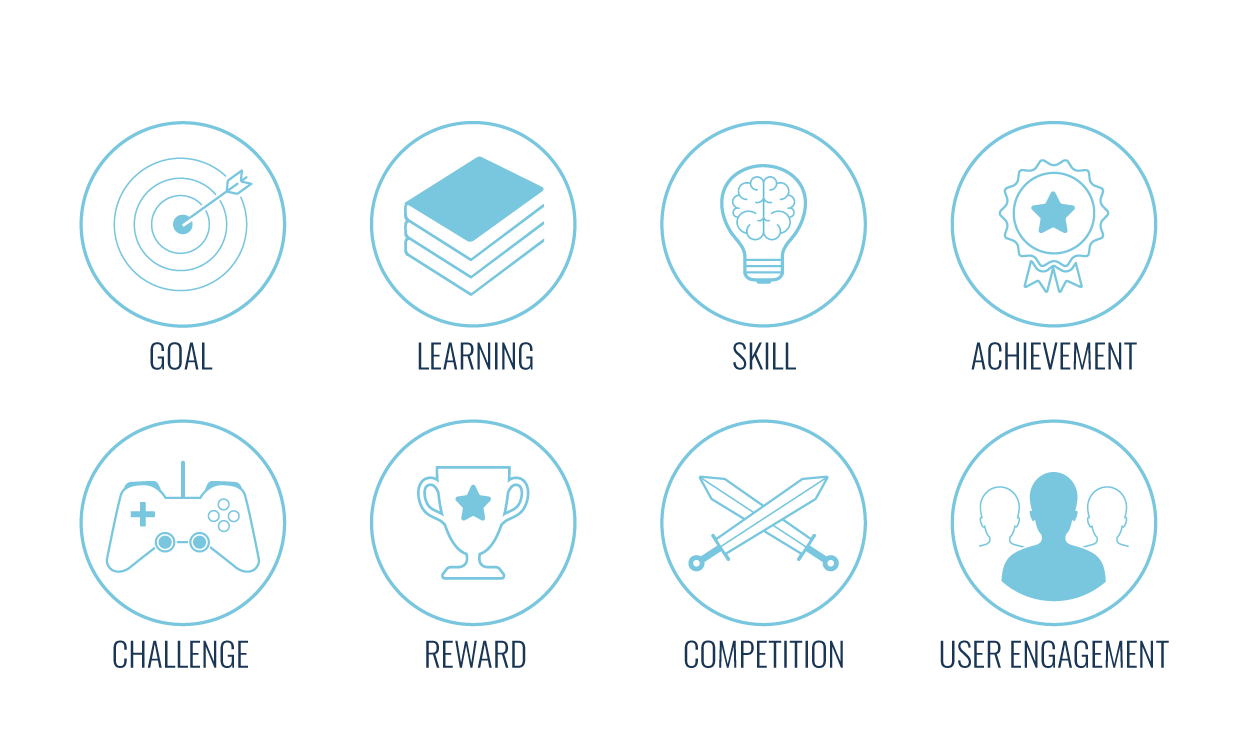
Numerous studies have confirmed that the use of game mechanics in training increases learner engagement. Game mechanics also help to narrow the gap between low and high scoring learners. With that said, let’s now look at the different game mechanics you can deploy to create your own gamified training programme.
| Experience Points Experience Points are points that learners earn as they progress through their training. They are also an indication of a learner’s mastery over their learning environment. |
|
| Badges Badges are virtual or physical tokens of personal achievement. They help to provide positive reinforcement for your learners. |
|
| Leaderboards Utilising a leaderboard helps to tap into your learners’ intrinsic motivations. Everyone wants to be acknowledged and praised. This mechanics also works particularly well amongst a competitive audience. |
|
| Levels Levels are another indication of learner progress. Each level should present new content and challenges to help keep interest levels high. |
|
| Battles Battles are player-vs-player knowledge quizzes that utilise a penalty shoot-out format. They tap into the competitive nature of your learners. |
|
| Scorecards A scorecard provides a handy summary of all your learners’ achievements so far. It contains a breakdown of their experience points, badges and leaderboard position. |
|
| Streaks A streak is a period of time during which something continues to happen. For instance, you could reward your learners for answering three questions correctly in a row, or completing five training courses in five days. |
|
| Rewards With a Reward Centre, you can tap into your learners’ extrinsic motivations. They can convert experience points and badges into real world rewards (such as vouchers, charitable donations or additional holiday days!). |
What are the Benefits of Gamification in Corporate Training?
1. It Boosts Learner Engagement
Learning feels awesome because it triggers a heady rush of happy hormones. So when learners enjoy training, they feel engaged and want to keep learning. In fact, gamification experts suggest there is a direct link between positive emotions and behaviour change.
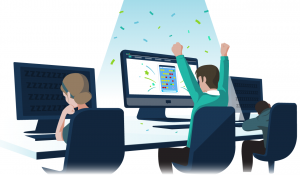
2. It Empowers Learners to Control Their Learning Outcomes
Game mechanics like levels help to make learning experiences more personalised and adaptive. Additionally, branching level structures help your employees to focus on the training materials that are most relevant to them. It also gives your training materials more Epic Meaning!
3. It Promotes a Knowledge Sharing Environment
Points and rewards can be used to encourage social activity. In similar fashion, peer feedback and knowledge sharing through virtual clubs fuel community spirit. In turn, this helps to create a strong learning culture.
4. It Enables Shorter Feedback Cycles
Gamification tools let you spot engagement patterns instantly! As your employees complete training, they earn rewards, climb the leaderboard and level up. In essence, looking at these different progress indicators is a great way to see if your training is engaging your audience.

This approach works particularly well within a gamified online learning environment. More specifically, gamification tools give you access to a reporting suite full of useful information.
5. It Drives Behavioural Change
By gamifying your training, you create engaged employees who are more likely to stay motivated to complete your training modules. Incentives such as points and badges help reinforce positive learning patterns.
In fact, one study suggests that technologies such as gamified apps are twice as influential on your behaviour than traditional (non-gamified) solutions. As such, gamification can better facilitate behavioural change through the power of engagement!
Are There Limitations to Gamification?
Like any other tool, gamification shouldn’t be seen as a magic elixir. It definitely won’t solve all inefficiencies linked to your training. In fact, there may be other problems aside from motivation that need to be accounted for.
For instance, a poor learning environment or content, or a lack of supervisor support, may be the root cause of underperforming training programmes.
There are also certain risks linked to the poor deployment of gamification in training. Firstly, overusing game mechanics may run the risk of shifting learner focus away from your actual training material. For instance, your learners may become more focused on earning points or climbing the leaderboard than they are in their professional development.
Secondly, if you don’t approach gamifying your training in the right way, your participants may see it as frivolous, excessive or even manipulative.
In other words, whilst gamifying training can prove to be transformative, it can sometimes be counterproductive. If you don’t consider your audience and their needs, you may struggle to achieve your original training objectives.
Given these points, simply adding game mechanics to training does not automatically guarantee learner engagement. Fortunately, the next section of this article lists all the do’s and don’ts to really make your gamified training plan soar!
Gamification Do’s & Don’ts in Training
Do’s
Align with Business & Learning Objectives
Conduct a training needs analysis before creating your gamification strategy. It is important to establish the goals of the training and the problem areas that need fixing. You can then select the game mechanics that are most suitable for your needs.

Epic Meaning: What’s In It For Me?
Once you’ve established your goals, find out what really matters to your employees. Namely, answer your learner’s WIIFM (What’s In It For Me) by communicating how the training will meet their goals. In effect, you create Epic Meaning by showing them how training goals are aligned with your company’s wider values and aspirations.
Personalisation
Everyone likes to feel special. So give your learners a tailored training experience that they’ll remember. By using gaming mechanics such as level pathways and storylines, you can make training more personal for your employees.
Microlearning
Combat dull, lengthy and boring content by breaking it down into digestible chunks of bite-sized content. When you provide microcontent to your learners in spaced-out intervals, you will reinforce the learning and avoid the dreaded Forgetting Curve.
Encourage Social Learning
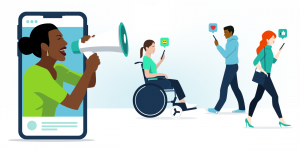
Social is also a great way to make all that learning stick and boost knowledge retention. This will then transform disengaged employees into active participants in their learning journeys. Through game-based elements such as Clubs and Battles, learners can communicate with each other or compete as individuals or in teams. This will definitely help cement learning and put employees’ new skills to the test.
Don’ts
Misaligned Objectives
The use of game mechanics can backfire if you do not link them to your business objectives. In fact, according to a Gartner study, 80% of businesses who do not clearly identify business objectives will fail. As such, a gamified training approach will benefit from aligning your mechanics to your specific training needs.
Neglecting Your Learner’s Journey
Even the most sophisticated gamified training environment can fail if the learner’s journey is not considered. What is your learner aiming to achieve? Where are they now in their development? How will they reach their destination?
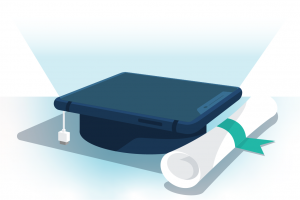
Most importantly, why should they bother learning at all? Determining the answers to these questions can help you to make more informed decisions when it comes to your gamification strategy.
Complicated Mechanics or Challenges
While challenging game mechanics can satisfy a learner’s desire for achievement and growth, too much can lead to frustration. If the difficulty level is too high, they may choose to drop the training altogether.
We recommend that you design challenges that encourage mastery and a sense of satisfaction for your learners.
Using Gamification To Fix Bad Products or Services
Keep in mind that the role of gamification in training is to address learner disengagement. If the root of the problem is a faulty product or service, then gamification is not the answer.
Oftentimes, companies that fail in their training efforts have unsolved underlying organisational issues. As such, you should take care to fix broken processes or products before you consider any gamification strategy.
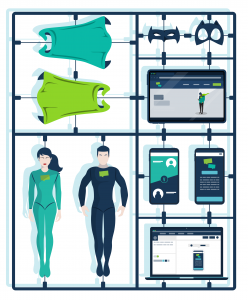
Implement the Wrong Tools
Avoid going overboard with game elements and tools just for the sake of gamifying your training programme. Design and implement a gamified environment that suits your workers and the values of your organisation.
Failure to do this runs the risk of further disengaging employees. This will further steer you away from achieving your training programme objectives.
Examples of Gamification in Corporate Training
Ready to see some gamified training in action? Here are three companies who have successfully transformed their training programmes with gamification!
AstraZeneca
International pharmaceutical giant AstraZeneca needed to train 500 sales staff about a powerful new range of medicines. Their objective was to get agents focused and excited about the project. They also wanted a team building tool and a way to check training results in real time.
To help facilitate this, they built a gamified system called Go-to-Jupiter. This environment incorporated game mechanics such as rewards, leaderboards and levels.
The result? The solution proved to be a great success, with over 95% of learners completing each training module.
As an added bonus, learners were completing content in their own time. All in all, it’s clear that AstraZeneca’s gamified approach improved training completion rates and helped to get the whole team excited about their new product launch.
Domino’s
Domino’s, one of the world’s most popular pizza chains, needed a recipe to improve their existing onboarding process. As their branches grew globally, they thus sought out an effective training programme that would help them maintain their high quality food and service.
The programme also needed to be customizable, in order to cater to the needs of their different franchise owners around the world.
To help meet this need, they invested in a gamified learning system which deployed microlearning materials. Specifically, these bite-sized modules were made to train and assess employees on new skills.
By including gamified elements such as levels, scoreboards and virtual simulations, learners were driven to achieve competency. The learning portal also enabled customization which allowed franchisees more control on how they would like to track and optimize team progress.
As a result, Domino’s saw an increased speed to competency for newly onboarded employees. In turn, this increased employee productivity and customer satisfaction. Domino’s also reported improved cost savings, and a decrease in customer complaints.
Overall, their approach was so successful that they extended this strategy for the public and potential recruits. So in 2015, they launched Pizza Hero. This was a gamified mobile app, which incorporated rich use of media, timed challenges and rewards. This was also met with similar success, generating as much as a 30% increase in sales upon its launch.
GAME
GAME is the leading specialist retailer of video games in the UK and Spain.
Prior to working with Growth Engineering, GAME had an eLearning training platform that wasn’t producing the goods. Learners didn’t engage with their training environment and therefore didn’t change their behaviour.
After research, it was determined that they needed an engaging training solution for their retail sales teams. As many of these individuals were gamers themselves, it was felt that a gamified solution would be the best possible approach.
As such, GAME worked with Growth Engineering to launch GAME Learning Zone in 2015. This was an online learning management system packed with game mechanics like experience points, badges, levels and leaderboards.
Since its launch, completion rates have soared, with an 89% completion rate on their sales scenario training alone. This led to a 94.3% uplift in the average customer basket, all because of the increased engagement displayed by GAME’s learners.
Final Words
Gamifying your training approach can be very effective. But you have to make sure you get your strategy right. Start by identifying problems with your existing training setup, understanding your audience and finding the right gamified solution.
After all, your game mechanics won’t move the dial if you completely disregard your learners’ needs and motivations.
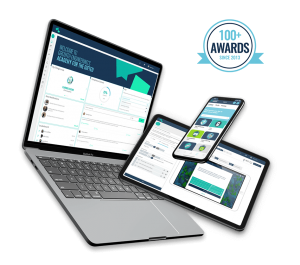
And what about us at Growth Engineering? Why do we care so much about gamification in training?
Well, we have pioneered the use of gamification within L&D. We have successfully engaged learners through our gamified training solutions: Growth Engineering LMS, Growth Engineering Learning App and Growth Engineering Authoring Tool.
These efforts have garnered us multiple awards such as Top Gamification Learning Management Systems 2021, Top eLearning Gamification Companies 2021 and Top Content Providers for Gamification 2020.
But more than just engagement, we deliver high-impact business results. Our gamified technology solutions have been shown to improve team performance by as much as 75% and improve sales growth by 20%. Find out more here!
Want more tips to really kick your game-based training into high gear? Download the Ultimate Guide to Gamification in Online Learning today!

